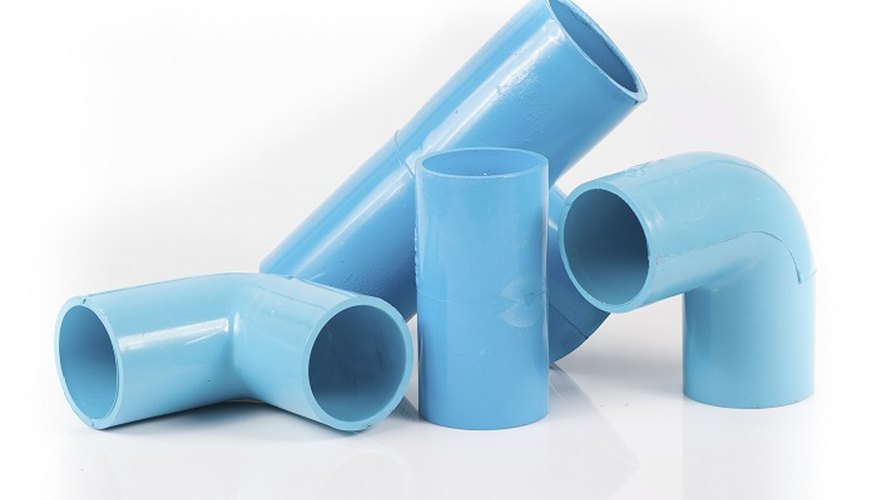Plastic pipes and fittings for drainage are made of either polyvinyl chloride (PVC) or black acrylonitrile butadiene styrene (ABS). Plastic water supply pipes are made of chlorinated polyvinyl chloride (CPVC). For both PVC and CPVC, primer and cement is used to join the fitting to the pipe, where as ABS uses only cement. However, in all cases, after the cement has dried -- which only takes a few seconds -- the fitting can be removed only by cutting it away from the pipe. The joint can't be used again, although the pipe can be used a second time as long as it's free of primer and cement.
Place the CPVC pipe in the jaws of a tube cutter, close to where the fitting attaches to the pipe. Squeeze the cutter's handles together to make a clean and straight cut through the pipe. Remove any burrs from the pipe end with a utility knife.
- Plastic pipes and fittings for drainage are made of either polyvinyl chloride (PVC) or black acrylonitrile butadiene styrene (ABS).
- Place the CPVC pipe in the jaws of a tube cutter, close to where the fitting attaches to the pipe.
Mark the PVC or ABS pipe 7.5 cm (3 inches) away from where it enters the fitting. If any primer or cement is on the pipe at that point, mark the pipe farther back from the fitting.
Cut through the pipe at the mark with a handsaw. Make the cut perpendicular to the pipe. Remove and discard the fitting. Scrape away any burrs or plastic fragments from the pipe end with a utility knife.
TIP
A hacksaw can also be used to cut the ABS/PVC pipe, although as the blade is not as thick as the blade on a handsaw it is harder to make the cut straight. A circular saw or mitre saw will make a cleaner and straighter cut than a handsaw or hacksaw.
